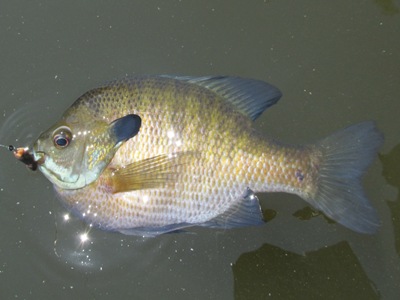Freshwater fishing, like many sports, involves a number of complex concepts. For beginners, the sheer volume of information about the sport can seem intimidating. Fortunately. most types of freshwater fishing can be enjoyed with only basic equipment, a limited budget, and a basic knowledge of the outdoors.
Best Places To Go Fishing
In the Mid Atlantic states, the list of potential fishing areas is incredible. Possible fishing areas include lakes, rivers, creeks, streams, ponds, and other waterways.
In most states, areas suitable for freshwater fishing lie within an hour or less of almost every city and town. In many communities, urban fishing opportunities exist.
Freshwater anglers fish along shorelines, from fishing piers, by wading, or from boats. Boats suitable for freshwater fishing include kayaks, canoes, jon boats, bass boats, and other types. In some cases, rather than purchase a boat, anglers choose rental boats or fish with professional fishing guides.
Fish Species

Depending on location, anglers may catch bass, crappie, sunfish, perch, walleye, musky, pike, pickerel, catfish, trout, salmon, suckers, carp, or other species. In addition to freshwater fish, some locations may contain anadromous species of fish.
Anadromous fish are able to move freely from saltwater into freshwater and vice-versa. Most species migrate into freshwater during the spring in order to spawn. After the spawning season, they move back towards brackish estuaries or into saltwater environments.
Anadromous species of the Mid Atlantic region include striped bass, white perch, yellow perch, hickory shad, American shad, alewife herring, blueback herring, American eels, and others.
Rods, Reels, Bait, and Tackle
For beginners, one or two basic rod and reel outfits, a handful of tackle, and a fishing license may be all that is required. Over time, additional equipment can be acquired as needed. Fishing equipment is often specialized depending on the type of fishing.
For beginners, a good starting point is a 6 foot light action rod, basic spinning reel, and 10 pound test line. When held correctly, the reel should be positioned under the rod. Most reels are equipped with interchangeable handles for either left or right handed anglers.
Essential tackle should include a few floats (bobbers), swivels, snap swivels, hooks, weights, and line. For bait fishing, a float, hooks, and bait may be all that is required.
A variety of baits are effective in freshwater environments. Nightcrawlers are the most common bait for freshwater fishing. Other popular baits include live minnows, crickets, insect larvae, shrimp, and fish eggs. A number of household foods are also suitable for bait, including chicken livers, cheese, doughballs, and even hot dogs.
After learning to cast baits under variety of conditions, anglers can begin using artificial lures. Although the variety of fishing lures can be overwhelming, most species of fish can be caught with a few simple lures. Some lures are intended for use with a particular species or water condition, while others are more suitable for general use.
Among the most reliable lure designs are shad darts, crappie jigs, curly-tailed grubs, plastic worms, spoons, crankbaits, inline spinners, and spinnerbaits.
Fishing Techniques
To the beginner, freshwater fishing can seem complicated, even overly technical. Despite all the high tech gear, scientific terminology, and regulatory complexity, freshwater fish can still be caught by using a few simple techniques.
Jigging is by far the simplest and most effective freshwater fishing technique. Dismissed as too primitive by some anglers, jigging can be extremely effective for catching a wide range of fish. Jigging works well with either lures or baits.
To jig, the angler moves the rod in an undulating motion. jigging can be combined with casting, or a lure can be simply dropped straight down. When sufficient depth is available, anglers often jig as they lower their lure to the bottom, then continue jigging while slowly retrieving line. Jigging can be done from boats while drifting or anchored. Jigging can also be effective when fishing from bridges, piers or even ice-fishing.
Sight casting is another effective technique. Although the practice requires a high level of casting accuracy, it can be well worth the effort. When sight casting, anglers scan the water for either a fish, or an area that has a high likelihood of harboring a fish.
Whenever possible, anglers look for swirls, disturbances, or fish at the water’s surface. Sight casters also target tree stumps, logs, weed beds, lily pads, or other structures.
Bottom bouncing can also be effective. Bottom bouncing can be done with cut baits, live baits, or artificial lures. This technique is usually done while drifting in boats. Anglers lower rigs to the bottom, allowing just enough line out so that the rig bounces along over the bottom.
Regulations
For the beginner fisherman, regulations can be overwhelming. To help comply with regulations, most state fish and wildlife agencies offer booklets that explain regulations and provide fish species identification information. Other resources include agency websites and smartphone apps.